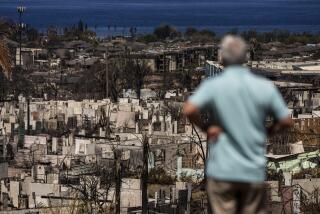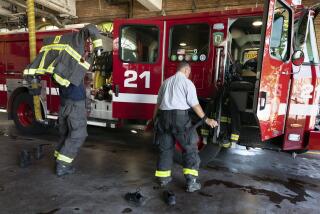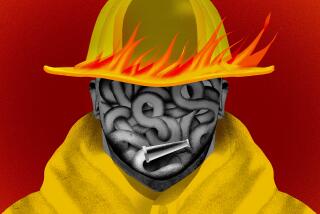Firefighters who went to ground zero face increased cancer risk
Firefighters who rushed to the World Trade Center on Sept. 11, 2001, and those who worked at the site in the weeks and months after the terrorist attack continue to live with an increased risk of cancer, according to a new study in the journal Lancet.
The incidence of cancer in firefighters who worked at ground zero was 32% higher than in firefighters who did not spend time in Lower Manhattan. After adjusting for the fact that doctors spent more time examining the health of rescue workers after 9/11, researchers still found that firefighters who worked at the trade center site were 19% more likely than their counterparts to develop any kind of cancer.
The most common type of cancer found in ground zero firefighters was prostate cancer, followed by melanoma, colon cancer, non-Hodgkin lymphoma and thyroid cancer. Cancers of the esophagus, stomach, pancreas, lung, bladder, testicles, kidney, blood and bone marrow were also reported. There weren’t enough cases of any individual type of cancer to say whether time spent at ground zero was associated with an increased risk, according to the study.
The analysis was based on health records of 9,853 New York City firefighters. All of them were men who were either black, white or Latino. (Women, Asians and Native Americans were excluded from the study because their small numbers could have skewed the results.) Health records for those in the study were easy to track because firefighters have insurance through their jobs, and the Fire Department of the city of New York set up additional health monitoring programs after 9/11.
The data include cancers found in the first seven years since the attack. The study did not report on cancer deaths among the firefighters.
Researchers don’t know exactly what accounts for the increased cancer rates in firefighters who worked at the trade center site, but there are plenty of possibilities. Those who went to ground zero breathed in a dust that contained “an amalgam of pulverized cement, glass fibers, asbestos, lead” and many kinds of chemicals, in addition to toxic fumes produced by burning jet fuel, the study says.
Among the 2,752 people who died in the attack on New York were 343 firefighters and paramedics.
A summary of the study is available here.
More to Read
Sign up for Essential California
The most important California stories and recommendations in your inbox every morning.
You may occasionally receive promotional content from the Los Angeles Times.











